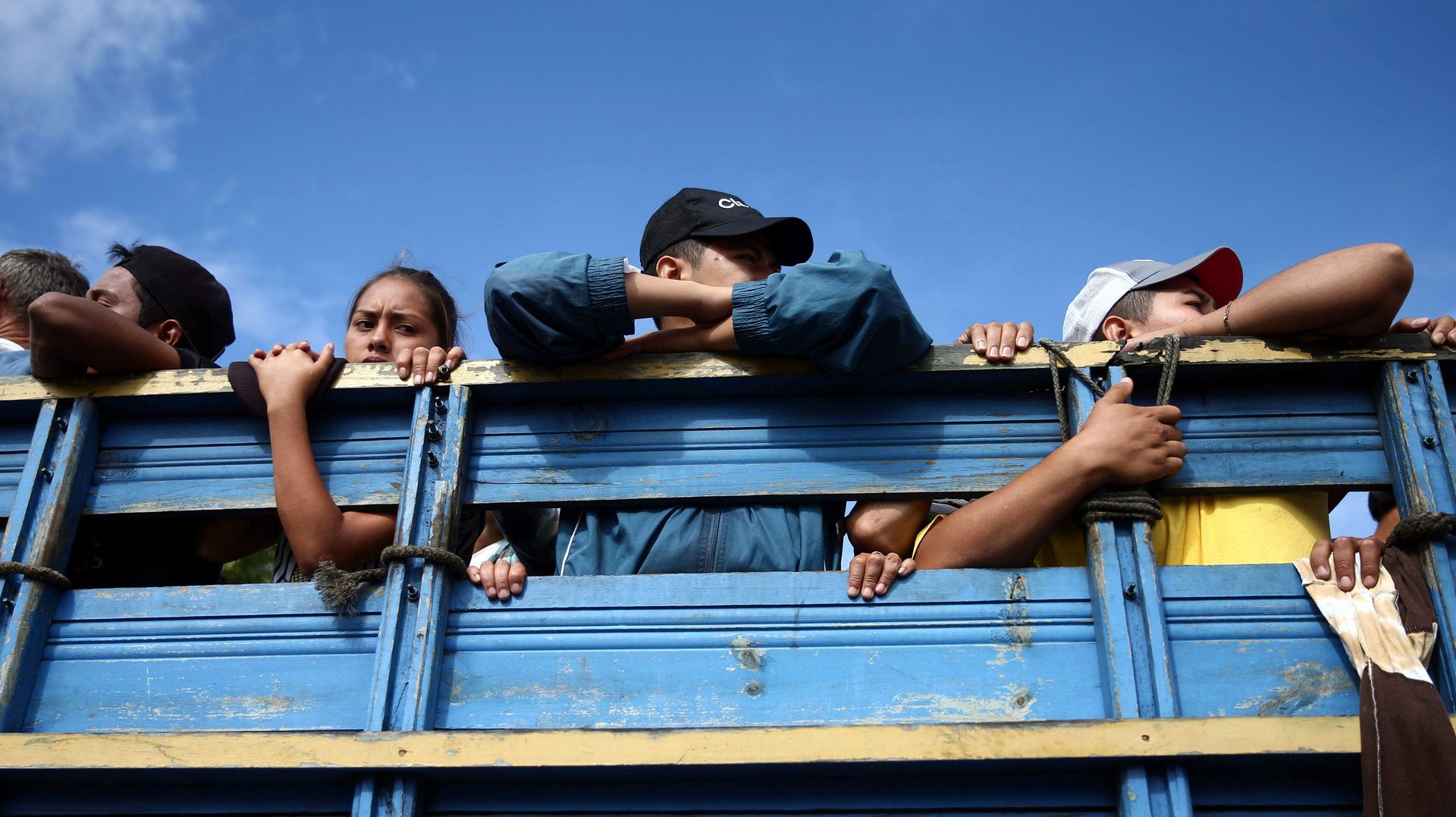How Trump could stop future migrant caravans
Another immigrant caravan from Central America is heading to the US, again drawing presidential ire. Donald Trump tweeted on Thursday that he will shut down the US-Mexico border if he has to, in order to stop the immigrants.


Another immigrant caravan from Central America is heading to the US, again drawing presidential ire. Donald Trump tweeted on Thursday that he will shut down the US-Mexico border if he has to, in order to stop the immigrants.
Update Oct. 22: In another set of tweets on Monday, after the migrants had crossed into Mexico, Trump declared the situation a national emergency. He also threatened to withdraw all US aid to Honduras, Guatemala, and El Salvador as punishment for allowing their citizens to migrate to the US.
Since he took office, the president has been trying to reduce immigration through a variety of methods, including by separating immigrant children from their parents. His administration started rolling out that practice in April, the same month in which a different immigrant caravan was making headlines.
While the number of immigrants attempting to enter the US dropped in the early months of his administration, it’s been climbing recently. The number of immigrants traveling with their families apprehended by the US Border Patrol in September rose to a record 16,658, according to data obtained by the Washington Post.
Why haven’t Trump’s aggressive tactics worked?
Asylum seekers vs. economic migrants
Trump’s attempts to deter migrants fail to address the real problem. The caravans and the rise in family apprehensions are not a sign of lawlessness at the border, calling for heavier patrols. Rather, they indicate that the US immigration system needs to be overhauled.
Immigration to the US has changed. Immigrants fleeing war-like conditions in Central American have been replacing the economic migrants from Mexico that used to make the bulk of border crossers. Unlike those economic migrants, who could be quickly turned back, the new arrivals are seeking asylum, which means the US is obligated to hear them out. (It committed to protect persecuted people by signing the 1967 “Protocol Relating to the Status of Refugees,” and through its own immigration laws.)
That task requires a different type of immigration system: one with more asylum officers and fewer Border Patrol agents. The surge in asylum claims has generated a huge backlog, of 320,000 as of June. Wait times can stretch for years. That delays granting protection to deserving applicants, and encourages non-deserving immigrants to apply, which in turn makes the backlog swell—and the problem worse.
If he wants to stop illegal immigration, what Trump should be sending to the border are asylum officers, not troops.